Open Mic is the series on BLISTER where we invite various people in the outdoor industry to say what they have to say, and share whatever it is they feel like sharing at this particular point in time.
Today, we hear from Eric Booton:
About Eric Booton:
Eric Booton is a lifelong outdoor enthusiast. Born and raised in Colorado, shaped by the Gunnison Valley, Eric has long called Alaska home.
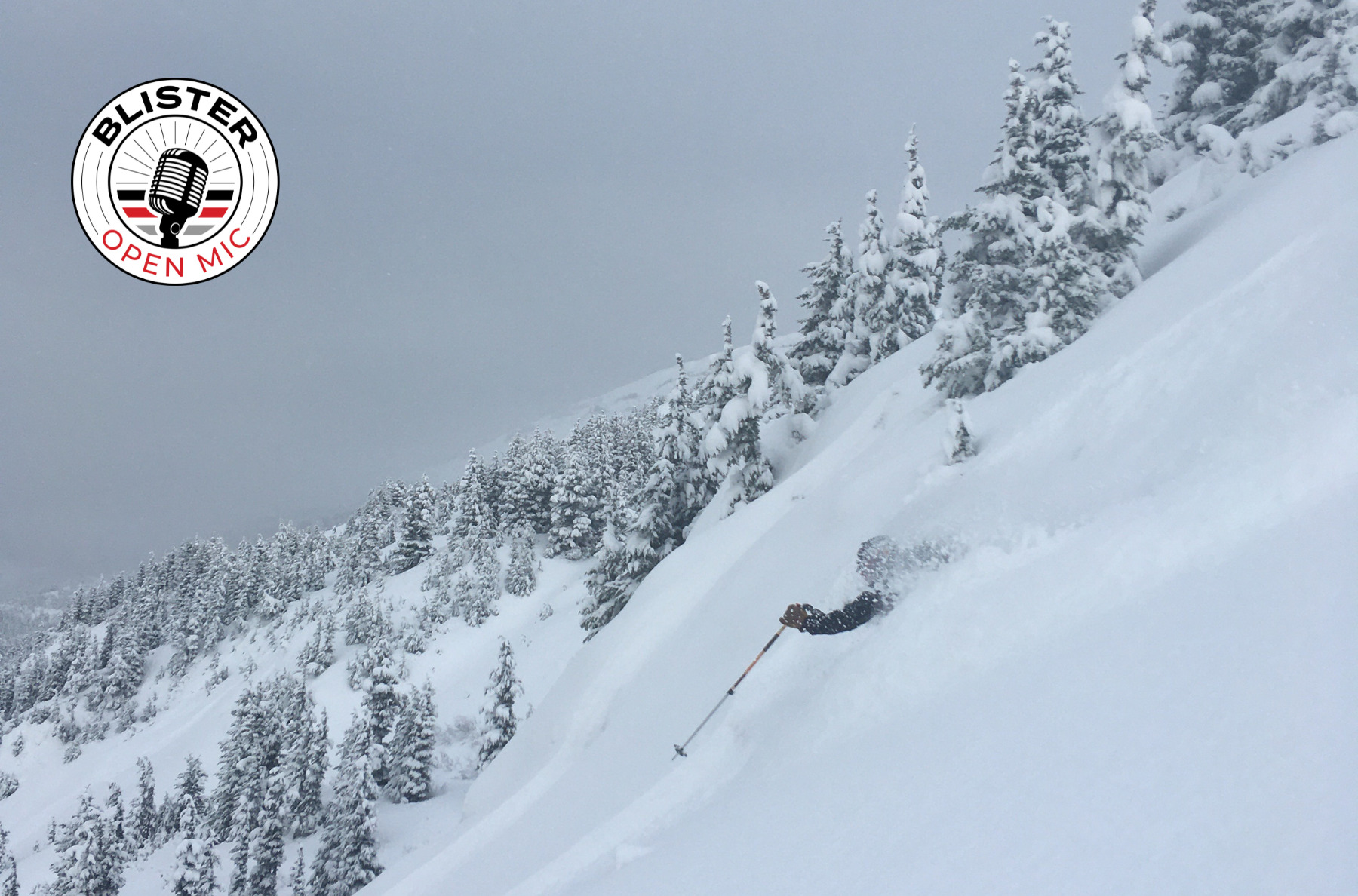
Only part of our lives is visible to the world. Many of us keep significant parts of ourselves tucked away out of fear of being vulnerable or misunderstood.
What follows is a part of my life that I had tucked away. Though I’ve accepted it, I still feel drawn to censor my experience, minimize the personal crisis. But that would stand in the way of sharing a personal experience that someone may need to hear, and there was a time when I desperately needed a story to help me understand what I was experiencing — it was a story I never found. So to anyone that may need to hear them, I hope these words find you.
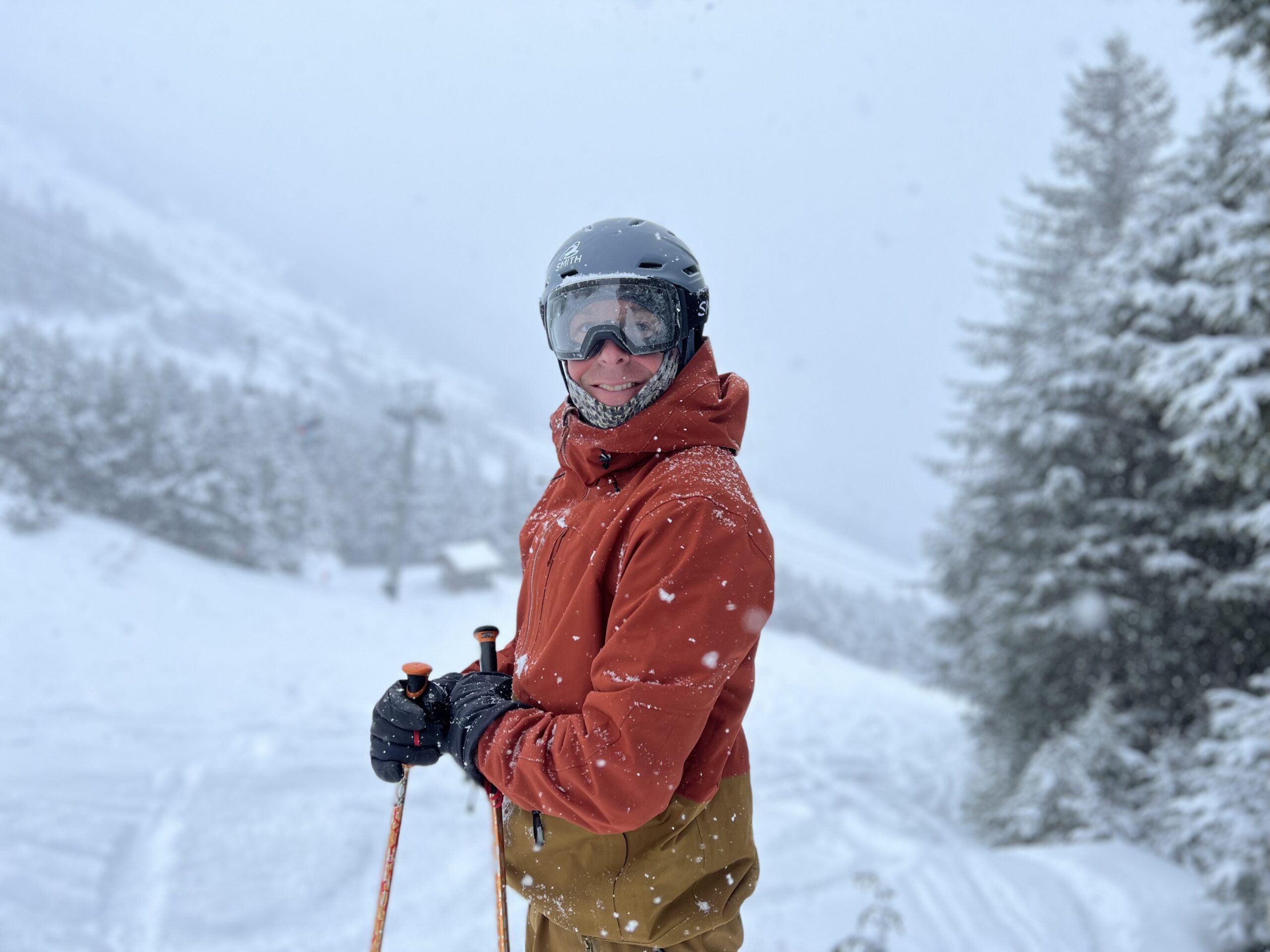
I have a recurring dream, and it goes like this: my left elbow is vertical and my hand is cradling the back of my head. It’s an odd way to sleep. Every single time it happens the exact same way: gravity wins, and my elbow falls to the side. My shoulder moves with it, dislocating from its socket.
I snap awake and launch into a frenzy. Urgency and terror ricochet through my mind. I need to relocate my shoulder as quickly as possible.
Folding myself over as if to touch my toes, I gently swing the limp limb like a pendulum. With the help of my good arm, I move my dislocated arm to retrace the path that the shoulder took to fall out of place. I grip a number of weighted objects as best I can with my dislocated arm in hopes that the downward force will reposition it and muscle memory will recover it. It feels like an eternity has passed as I repeatedly attempt to relocate the joint using every method that has previously worked for me.
I’m unsuccessful. Nothing works and now I’m screaming for help in my dark room. My roommates do not wake up. My girlfriend does not come. My body is broken. I am alone and I am helpless. I scream and scream at the top of my lungs.
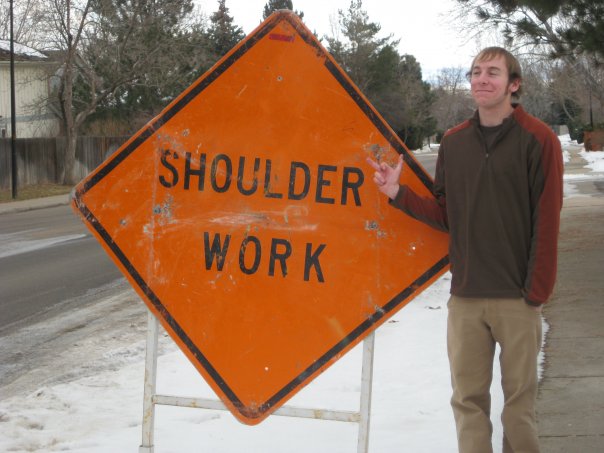
This recurring nightmare is a byproduct of the countless shoulder dislocations I’ve endured — but with a dark twist of aloneness. In reality, someone supported me as I attempted to relocate my shoulder, then drove me to the hospital in the middle of the night when I couldn’t attempt to relocate my shoulder any longer. On the way home, after the joint was relocated, the traumatic incident was swept to the fringes of my mind, joining a heaping pile of similar incidents never to be spoken of again.
The nightmares surfaced in my dreams weekly, sometimes more frequently, throughout my late twenties. When I’d wake up, I’d have to convince myself it hadn’t happened again, I hadn’t actually dislocated my shoulder, and I didn’t need to get wheeled off to another surgery. The haunting repetition of these dreams left me rattled as they refreshed my growing jumble of disorganized traumatic memories, an indicator of just how severe my accumulation of unprocessed, unresolved trauma had grown. Eventually, I realized if I was ever going to fully heal, not only physically but mentally, then I was going to have to do things differently. In order to kindle the fires of change and stoke the embers of personal growth, I had to be the one to light the match.
My shoulder saga was set into motion by a single incident during weight lifting class my junior year of high school. I had a cross country meet that day and asked not to lift. But the football coach teaching the class wasn’t concerned with the wishes of a cross country runner, even if I was on the varsity team. So I lined up for “max outs” with everyone else.
While lifting as much weight as I possibly could in a military lift variation, I lost control of the weight. Gravity pulled the bar down and away from my head before being caught by the spotter, subluxing, or partially dislocating, my left shoulder.
The instability of the joint caused by this initial insult worsened over time. Eventually my shoulder started subluxing frequently, often during simple activities like removing my shirt, reaching overhead, and even sleeping.
I was a senior in high school when I had the first surgery on my left shoulder to reattach my torn labrum, a procedure known as a Bankart repair. Just weeks before the operation, I’d participated in the U.S. Extreme Junior Freeskiing Championships in Crested Butte, Colorado, a dream that was years in the making, and a taste of the future I was committed to creating for myself. As a buoyant teenager solely focused on pushing my limits skiing and going as fast as possible on my mountain bike, this surgery nearly felt like a right of passage in the world of extreme sports. I had no concern. By following the doctor’s orders and completing physical therapy, I figured I’d be back on skis in no time.
Five months after surgery, in the fall of 2008, I was unloading gear into my dorm room at Western in Gunnison, Colorado — a deliberate move to be closer to Crested Butte, an epicenter of freeride skiing. I found friendship and community racing for the collegiate mountain bike team and exploring Crested Butte’s extreme terrain. I laid down a respectable qualifying run in New Mexico at the 2009 Taos Extreme Freeride Championships, then crashed spectacularly, but without injury, in the finals. I was surrounded by a community that I identified with in a world-class playground for my pursuits.
I was exactly where I wanted to be.

A year later, early in the second ski season after my labrum repair, I was dusting off tricks in the terrain park. While spinning a 540, my left shoulder fully dislocated mid-flight. I fell from the sky and landed in the new reality that my surgery had failed.
Hunched over in the snow, I was in a panic. This was the first time my arm had come completely out of the shoulder socket and stayed there.
“Holy shit! How do I fix this?” I screamed in my head.
My friend stood at the top of the jump ushering skiers around while I attempted to put myself together and keep from passing out. From my many previous partial dislocations, I knew what it felt like for my shoulder to relocate. But while I knew that it was theoretically possible for me to do it myself, I was unsure how.
When ski patrol arrived on scene they provided additional suggestions on relocating the joint since they knew how painful a toboggan ride down the mountain would be, but all efforts were unsuccessful. Instead, I was loaded into the sled and administered a painkiller for the excruciating ride behind the patroller. A box truck delivered me to the clinic where, as I lay in bed, the nurse wrapped a bed sheet around my chest and tied the ends around her waist. Then the doctor wrapped a second sheet around my elbow and secured it to his waist. Finally, the doctor and nurse put their weight in opposite directions using countertraction and traction to reduce, or relocate, the shoulder. It was an alarming production to experience.
On the way home from the ski area that day, I had to dig deep in preparation to call my parents. It was a devastating disappointment to me. My shoulder was supposed to be fixed. I know my parents will always love me, but I had seen how many zeroes were on the price tag for my surgery, and I knew this trip to the clinic would be costly, too. When my parents answered the phone, I recounted what had occurred in a deflated voice.
My second shoulder surgery took place almost immediately after, in January, 2010. It was a second Bankart repair to reattach the retorn labrum.
Though eager to get the operation and move on, my thoughts were becoming increasingly somber. Only twenty years old with repeat shoulder injuries? My adult life was just beginning, and already I was caught in limbo between the pursuit of my passions and self preservation. I wondered constantly, will this surgery do the trick? Do I need to stop skiing?
Moderation was a logical solution, so I committed to only hitting lines that I was confident I could land. No more spins and flips. I would simply race for fun on my bike (and small jumps ONLY). Rock climbing? I’d hung up the chalk bag last year. Kayaking? Total non-starter.
In 2010, I traveled to Truckee, California, for the USA Cycling Collegiate Mountain Bike National Championships at Northstar Ski Resort, and raced in all four events (cross country, short track, downhill, and fourcross). I finished each race mid-pack with a smile. I was the president of the team and thrilled we had made it to Nationals. After the downhill race, the final race of the event, I rode back to the base of the mountain for awards with a teammate. We were on a wide, easy, dirt trail, practically a sidewalk. My front tire found loose gravel in one of the turns, washed out from under me, and, in a slow-speed crash, I reached my arms out to soften my body’s impact with the earth. I felt it before I hit the ground — my left shoulder dislocated when I had extended my arms to catch my fall. My second shoulder surgery had just failed less than a year in.
As the dust settled, I found myself keeled over, cradling my limp arm. My body was awash with pain and endorphins. Part of my brain simply flashed dollar signs, while the question, “How am I going to get my shoulder relocated” ricocheted around. I still didn’t have any experience reducing my own shoulder yet.
“This is a fucking problem,” I frantically thought.
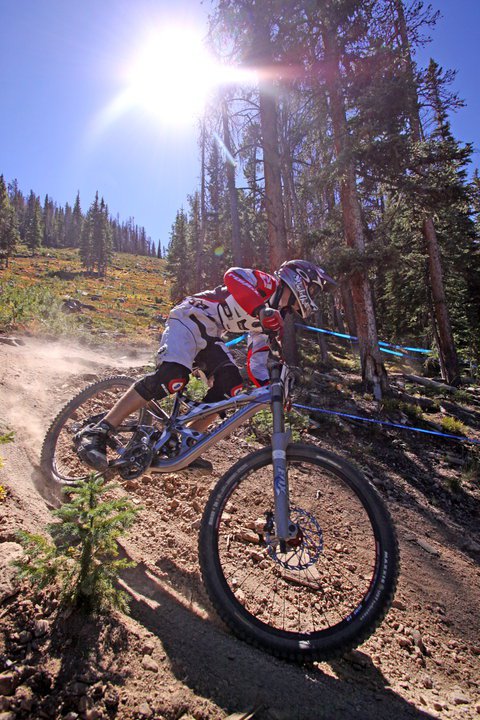
My teammate helped me to my feet and began walking my bike back to the base area while I slowly trailed behind attempting to immobilize my arm. There is no fully effective way to limit the movement of a dislocated shoulder though, so each step was excruciating and nauseating. Part way back, my shoulder relocated itself. It hurt like hell, but I was relieved; the problem temporarily alleviated.
I didn’t call my parents after that dislocation. I couldn’t tell them another surgery had failed. What was unfolding seemed like too much to burden them with when they had already done so much to support me. Back in the parking lot, I tied my jersey into a sling for support, then quickly consumed a beer or two to suppress my pain and emotions before joining the team at the awards ceremony. The unhealthy pattern of burying my feelings was gaining momentum.
In the world of shoulder injuries, I blossomed into an anomaly. The instability in my shoulder persisted, and I quickly accumulated a staggering number of shoulder dislocations and extensive experience relocating the joint myself. At first I took interest in the tally, but eventually it became unsettling and heartbreaking. I stopped counting somewhere in the sixties. But even though I’d stopped counting, the dislocations didn’t stop happening.
The number of times I have dislocated my shoulders isn’t the point, though. Each dislocation was a traumatic and painful experience that required time to recover physically and emotionally. But as the tally grew and the frequency of my dislocations increased, there wasn’t enough time to recover. The emotional toll compounded continuously.
Despite this abundance of shoulder carnage, few of the injuries actually occurred while I was recreating outdoors. Quite the opposite. Most were tame, often embarrassing, occasions — putting on jackets, posing for family photos, unlocking bikes, giving high fives at parties, skinny dipping in a hot tub, slipping on ice, even dancing. Basic life activities like showering carried risk and were approached with caution — no one wants to seek help in the nude. I was perpetually guarded.
The routine reappearance of a sling cradling my left arm was a public announcement to college classmates, coworkers, and family that I’d “done it again.” As an aggressive skier and mountain-bike racer I’d repeatedly get asked, “So what did you do this time?” — the presumption being that I had done something reckless or stupid, when the truth often was that it happened getting ready for bed or reaching for the mayo on the top shelf at work. In private, I’d sleep in a sling to limit the chance of dislocating my shoulder in my sleep, which was an embarrassing dependency that added to the shame I felt.
I was becoming more known for my shoulder injuries than anything else.
I’ve always been someone who has burst at the seams with energy. And burning that energy off soothes and relaxes me in a way that borders on addiction, which I know many outdoor enthusiasts can relate to.
But during my twenties, I found myself stuck on the couch, healing after another dislocation or surgery, all the damn time. For many people who find fulfillment in the outdoors, this can be an isolating experience at best, and a recipe for depression at worst. My buddies skied pow while I watched the snow fall and cracked another beer in my dorm room. When you’re in a ski town and can’t ski, you’re often left with unhealthy options to fill your time.
My friendships and community were all built on the shared love of two sports that I was increasingly unable to safely participate in, and watching them slip away from me was a shock that challenged who I told myself I was and who I wanted to be. The failure of my second surgery kicked off an identity crisis. I was lost.
On a pivotal Saturday morning in 2011, hungover from hitting it hard at the bar as a recent 21 year old, I dug my dusty fly rod out of the shed while my best friends geared up to ski. I set out on a spring morning for the Taylor River. I didn’t have much clue what I was doing, and I failed to catch any fish. But that day I took the first step down a new path, and uncovered a new way to explore the world, find meaning, and create community through a more shoulder-friendly activity.
I continued to fish that summer and fall, and never stopped. I was finding new hope in new adventures, seeking out new destinations, and slowly finding success in fly fishing. Meanwhile, my shoulder continued to move through a cycle of healing, dislocation, and panic until it was relocated. Recover and repeat. Daily pain and regular dislocations clouded my mind, and fear became an unwelcome parasite as I lived on edge, vigilantly attempting to avoid the next dislocation. This made it virtually impossible to ever be fully present in the moment, and I was increasingly haunted by unprocessed trauma. Fly fishing became the pastime that could transport me to a safe and peaceful escape. Fly fishing hooked me, and I believe I owe my life to it.
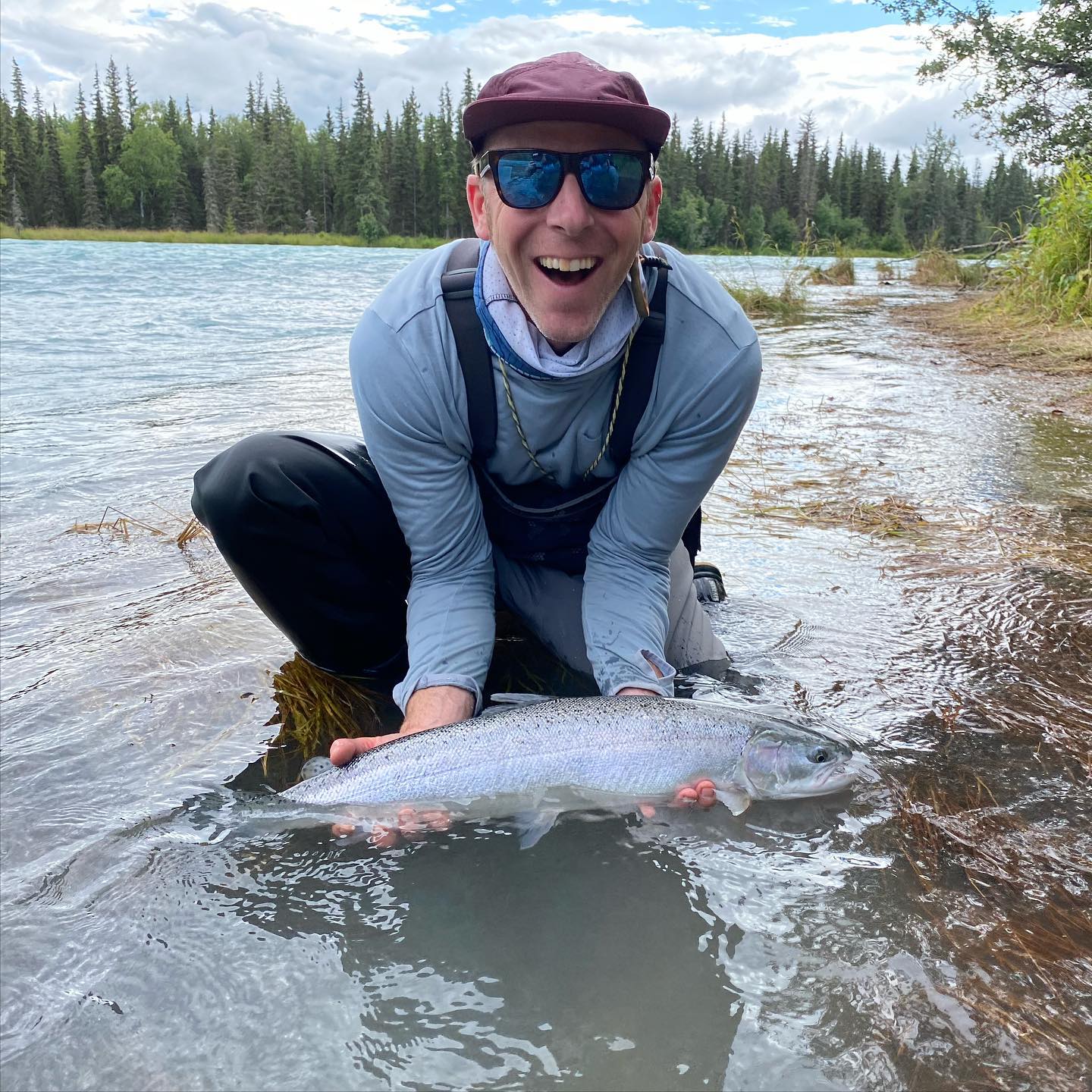
In September 2011, after innumerable dislocations, I underwent my third Bankart repair on my left shoulder. I felt that three surgeries on the same joint in less than four years was absurd and I needed to end the cycle. So I threw myself into my recovery harder than ever, never skimping on at-home physical therapy sessions and even requesting additional exercises. My efforts only paid off for a little while.
A year later, on a day off from working on a trail crew for the Forest Service, I stopped by a former professor’s house to help plant some trees. While moving one of the five-foot trees to be planted, we worked together to spin the heavy planter across the yard. The planter caught some unexpected momentum and continued its spin, taking my left arm with it. My shoulder popped out of its socket, and my third surgery failed one year after I had it. I was three months out from graduation, and had tasted a potentially fulfilling career path; I’d loved my summer caring for places that were special to me, and I’d even regained some confidence in my shoulder. But here I was again. I held my retorn labrum tighter than ever.
I didn’t tell many people that my shoulder surgery had failed again, thinking no one needed to be privy to my emotional despair. Telling my parents and close friends was difficult as it was. The incident was an honest fluke, yet I still felt guilty and ashamed. Keeping silent saved me from being asked all the questions I could no longer bear to hear. I was back to sleeping in a sling. Back on continuous guard to avoid potential threats. My community and my identity further diminished. Unsure of who I was and where I was headed, I sunk into something of a quarter-life crisis.
Amid six agonizing years of recurring traumatic injuries, operations, and recoveries, I could no longer see a future free of the dislocations, which created a deep sense of powerlessness. I felt out of options. Except one. I could break free from pain and fear by ending my life. It was a truth that was both alarming and empowering. At times I would catch myself rolling the bullets of my .22 caliber handgun through my fingers, being thankful that they weren’t bigger, since that would make the decision easier.
I was at a new low, but asking for help never occurred to me. I had grown up tailoring myself to be accepted by society, and therapy was taboo. Besides, men in their early twenties are supposed to be strong, I told myself. But this cycle of shoulder trauma would never end, and I was unsure how much longer I could endure it. I never attempted suicide, but it took root as an escape plan.
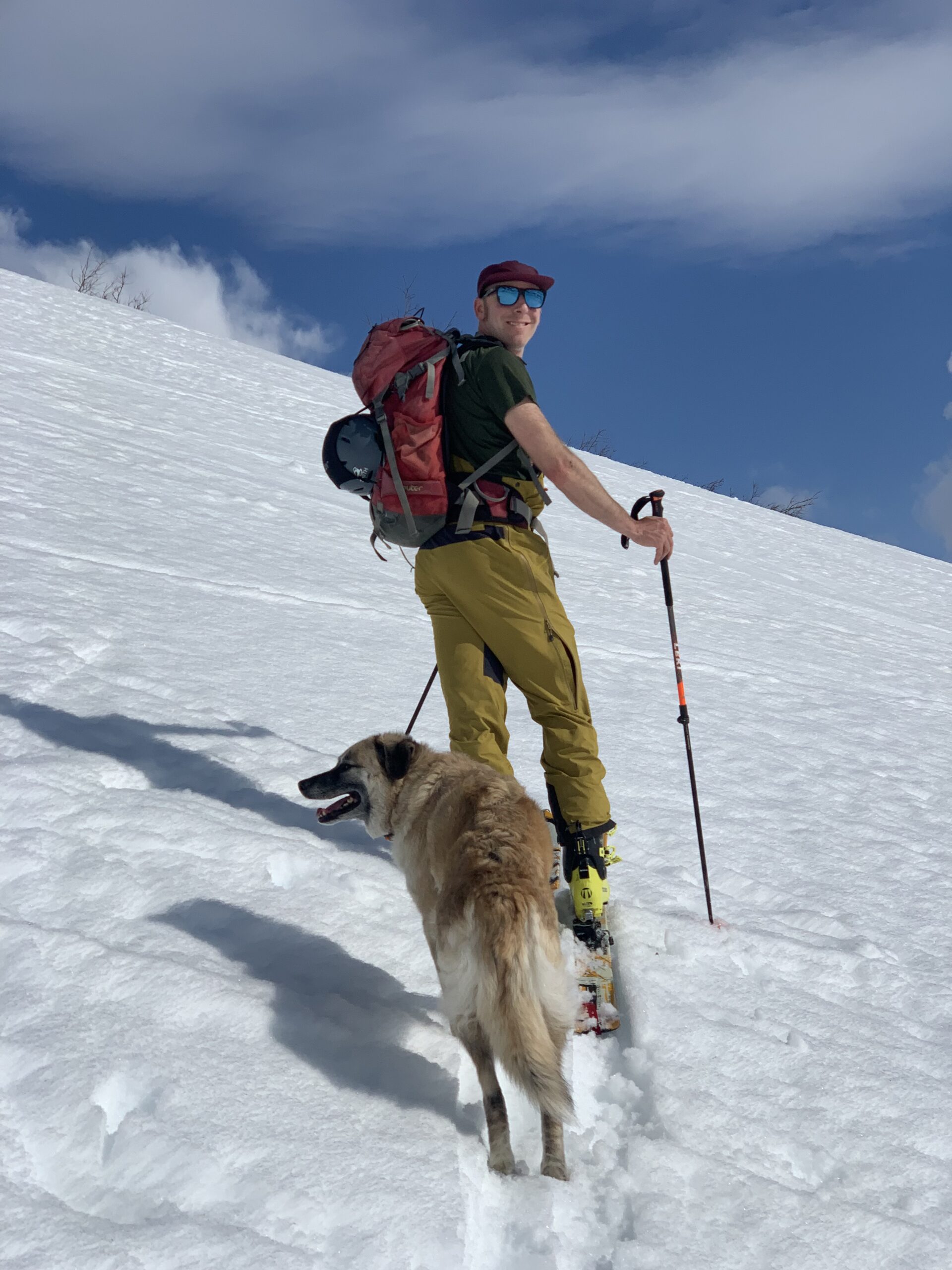
In May 2013, my dog Brook and I drove north to Alaska in my Nissan Xterra loaded with gear and two bikes on top. I was extremely fond of Gunnison, and despite my personal struggle, had strong bonds with many and a deep love of its public lands. But it was time to write the next chapter. Beyond the boundless wildlands and opportunities for work in my field, Alaska offered a crack at new relationships and a fresh community. No one knew my name, and no one would ask about my shoulder.
Later that year, I traveIed home to get a fourth, more extensive operation to regain the stability of my left shoulder. I underwent a Latarjet shoulder reconstruction where, in addition to the labrum being reattached, a small piece of my shoulder blade was cut out and moved to the front of the shoulder socket to compensate for the bone that had eroded away during prior dislocations, and to block the humeral head from slipping out in the future.
This time, it worked. I was free to settle into a new life in Alaska. Every weekend was a new adventure with friends, and I was finding peace on the shores of salmon streams and in the company of glaciers. I was captivated by the final frontier. Gradually, I began regaining confidence, and the anxiety, depression, and torment I had been living with shifted to the back burner. But after the hell I endured with my left shoulder’s instability, the importance of preserving the stability of my right shoulder became paramount. Dislocating my right shoulder became my biggest fear in life.
In 2018, five years after my last shoulder surgery, I was walking up a set of stairs for a work event. I reached up for the handrail and my right shoulder dislocated. In that absolutely unanticipated moment, my biggest fear became a reality. With support from the couple on the staircase behind me as I tried not to pass out, I popped my right shoulder back into place. In shock, physically hurting and mentally collapsing, I put my hand in my pocket for support and carried on with the event like nothing happened. Old habits die hard.
I drifted through life during the following weeks. Attending appointments, getting pushed headfirst into an MRI tube, and scheduling yet another shoulder surgery — all while in disbelief and dissociated from reality. My fifth shoulder surgery, the first on my right shoulder, was more than just simply reattaching the labrum — the surgeon performed a SLAP tear procedure, including a capsular shift surgery, to tighten my shoulder capsule and ligaments to best limit the possibility of future dislocations. Eager for this ordeal to end, I did what I’d always done afterward: put my head down, committed to physical therapy, and focused on my physical recovery.
But my emotional recovery went unaddressed, and the unprocessed trauma that I’d tucked away over the past twelve years came surging back to the forefront of my life, more aggressive than ever. The mirror became an enemy, reflecting a struggle I had yet to acknowledge. It was impossible to avoid fixating on the matching scars on my shoulders. Tracing them with my finger, I could feel them tingle as they reverberated my injuries and reinforced my limitations, confining who I was. The spark was fading from my eyes, I could see it, and the adventure in my tilted smile was replaced with hollow fear.
Without confidence in the stability of my shoulders, I lost confidence in myself. My shoulders weren’t good enough, I wasn’t good enough. My self worth all but disappeared, and I assumed the role of my own worst enemy. Cursing any minor mistake and chastising myself over any imperfection, I abused myself and became more accepting of abuse in my relationships.
Science has shown that trauma has the power to alter how our brain functions. The physical and sensory experiences of trauma are imprinted into our nervous system. As such, our bodies carry physical memories of our trauma. Retrieving a jar off the top shelf may mean little to most, but having dislocated my shoulder reaching for a jar on the top shelf, that physical motion bore significant weight in my brain. Unfortunately, I had dislocated my shoulders with a wide variety of basic movements, and now each of these incidents were seared into my nervous system and bookmarked in my brain.
Regularly, I would execute a motion or task without second thought, only to be forcefully interrupted by my nervous system, which knew from past experience that what I was doing could end in pain. In response, I would freeze, clutch my arm to my chest, and be thankful that it wasn’t dislocated — despite the fact that my muscles and nerves were briefly screaming that it was. The physical memories stopped me in my tracks and became increasingly difficult to bounce back from. I was haunted by the shoulder dislocations of my past. I was living in fear.
Recurring nightmares were another manifestation of my unprocessed trauma, and though they were not new — over the course of a decade I’d had many — their intensity and frequency had severely ramped up. The dream where I would dislocate my shoulder in my sleep, struggle to relocate it, and scream out for help in an empty world was the most common one, but other vivid incidents occupied my brain at night, with surgery scenes and doctors reducing my shoulders making regular appearances. Waking up in cold sweats and talking myself down from what felt like another very real dislocation or surgery; it seemed cruel and was certainly taxing.
Most unsettling of all, the nightmares were not limited to when I was sleeping. They began visiting me while I was wide awake, which simultaneously confused the hell out of me and scared me shitless.
In sedentary moments of the day when life slowed down, I could be violently thrown back into the past. These flashbacks sometimes occurred unprovoked, but reading — and especially movies and tv shows — were sure triggers. Scenes featuring physical injury or hospital visits, particularly surgery scenes or shoulder injuries, would completely shut me down. (And it turns out, Hollywood loves a good shoulder dislocation.)
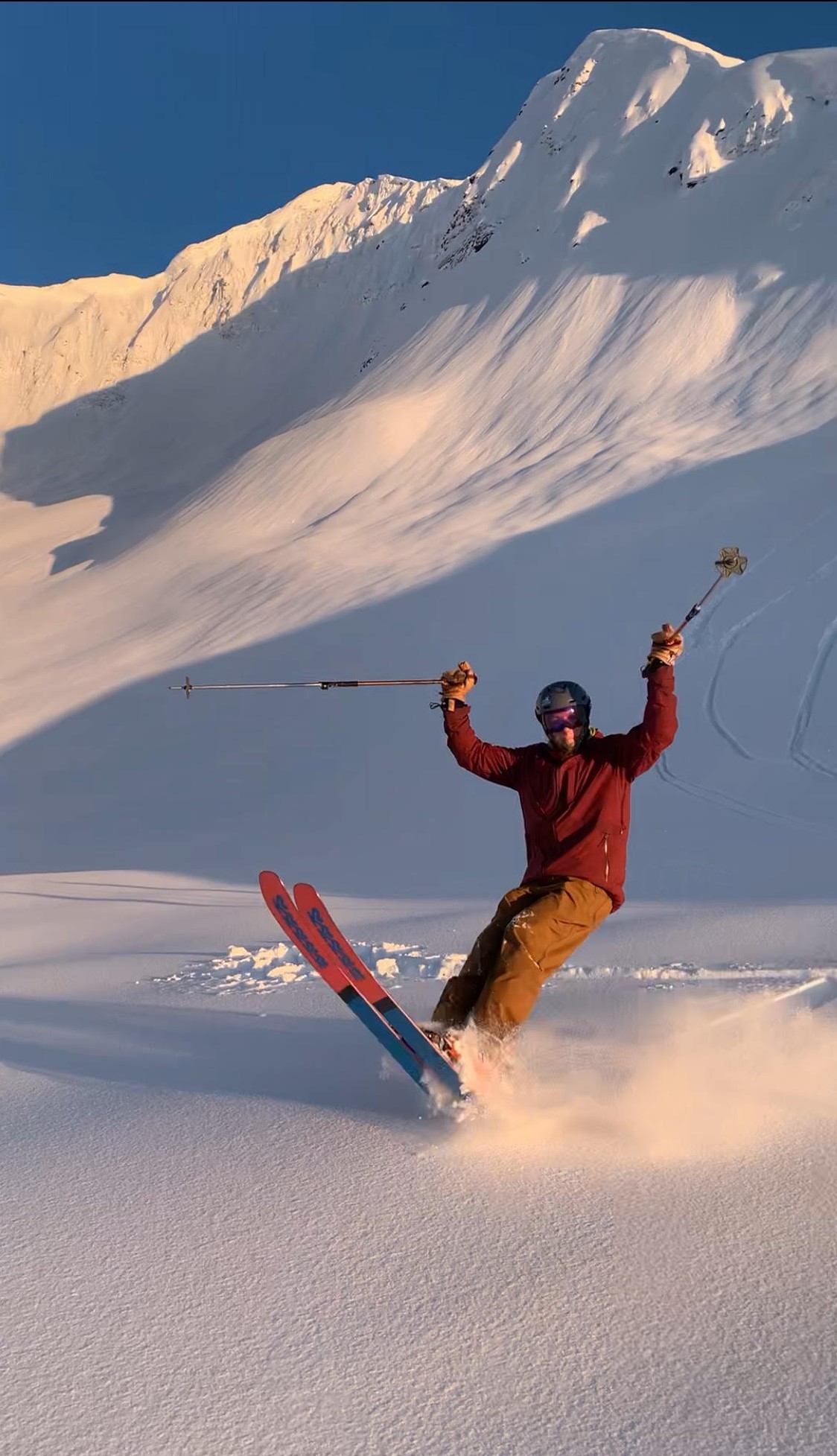
Unsafe in these slower settings, I became wholly reliant on recreation to distract me. Fly fishing, camping, skiing, mountain biking, and preoccupying my mind with any adventure at hand was the best way to achieve a semblance of control and avoid the involuntary resurgence of trauma.
Using recreation as the primary solution to personal challenges is an all-too-common trend among outdoor enthusiasts. While outdoor recreation can make for a beautiful addition to the challenging journey of recovery, we are kidding ourselves and limiting our full potential if we think donning skis and riding bikes will solve our mental health struggles. The activities I love, the cornerstones of my life, were now just coping mechanisms. They were no longer sources of joy, they were an avoidance tactic.
On top of it all, the expectations put on me as a young man growing up in the 90’s, garbage as they were, had set me up for failure. Hollywood and society repeatedly told us that men are tough and that emotion is feminine and weak. As an adolescent infatuated with extreme sports, the X Games set a bar for success and ski movies modeled the prescribed demeanor of young skiers. The males they featured were never vulnerable and instead wore masculinity on their sleeves. Watching close friends suffer serious injuries or battle life threatening illnesses, I convinced myself that, “If they can survive a broken back, I should be able to handle some dislocated shoulders.” I continually downplayed my own struggle and suffered in the silence. Burying emotion and suppressing feelings was a defining lesson of my childhood, and it had gotten me nowhere.
Telling someone how deeply I was struggling, even my then wife, felt impossible. What had begun as suppressing feelings to meet societal expectations had morphed into maintaining the narrative that I was “okay,” while I questioned the validity of my own struggle. This burden had spiraled into a beast that I couldn’t control or comprehend, and I worried that no one else would understand.
I was scared of the shadows in my mind, unsafe, and increasingly dark. But I needed help to cast light on them. I knew I couldn’t keep this problem buried any longer.
After more than a decade of telling the world that I was fine, I had to admit that I was, in truth, not okay. The time to stoke the fires of change was now — all I had to do was strike the match.
I was trembling as I waited for the first appointment with my therapist in late 2019. Nervous as I was, I was confident this was where I needed to be.
Therapy, if you’re fully invested in the outcome, is far from easy. For the first 18 months I spent my sessions dredging through nearly 15 years worth of experiences, sifting through suppressed feelings and repressed memories, voicing thoughts and experiences I’d never felt safe enough to share. I rewarded myself after each session with a donut, a personal treat to recognize my efforts. In time, I held my head high as I walked through the halls of the medical complex to the office of my therapist, firm in the resolve that I was doing exactly what I should be, taking care of myself. This work was something to be celebrated.
A principal root of my ailments was the heap of traumatic experiences that I had not processed. Unresolved, they were stranded in the present as sensations, mental images, flashbacks, etc. Using Eye-Movement Desensitization & Reprocessing therapy (EMDR) my therapist helped me integrate these traumatic experiences into my memory appropriately, turning them into coherent events of the past.
With time, intention, and commitment, the nightmares began to fade. I stopped slipping into flashbacks, and traumatic bookmarks lost the power they once wielded. I was given tools to calm my amygdala and recover from any excessive response. The pain and fear that had drug me down for so long was becoming part of my past, and I found myself standing with two feet in the present.
Now, in 2023, it’s been more than two years since concluding with my therapist. That final session wasn’t an ending or a neat bow tied on my recovery journey. It was a beginning, and a vote of confidence in my ability to employ the tools I had been given to address any further symptoms and process traumatic experiences. The terrors that plagued me have largely subsided. I can’t remember the last time I experienced a flashback or found myself in a reoccurring nightmare. I am more open, more connected, and more confident after having processed the substantial mess of repetitive trauma, and put in the effort to work beyond the fear that was destroying my life.
I’ve regained parts of myself I’d lost along the way — silliness, creativity, positivity — and I love having them back. Life is fresh and inviting again. There is so much beauty in this world, and I’m positive I can find and appreciate it even if I somehow sustain more shoulder trauma. Suicide isn’t an emergency escape plan any longer.
What I find most rewarding is how the negative voice of self doubt I had developed has transitioned into a voice of positivity and support. I treat myself the exact way I wish to be treated — with kindness and respect. I still live and play with two shoulders that have experienced notable damage, but no longer see my shoulders as a weakness. I know the extent of what they have experienced, and I am proud of them. I listen to their needs and have found a routine strengthening and stretching practice that helps ease the pain and tension in my shoulders. It keeps me confident in them and I’m devoted to it.
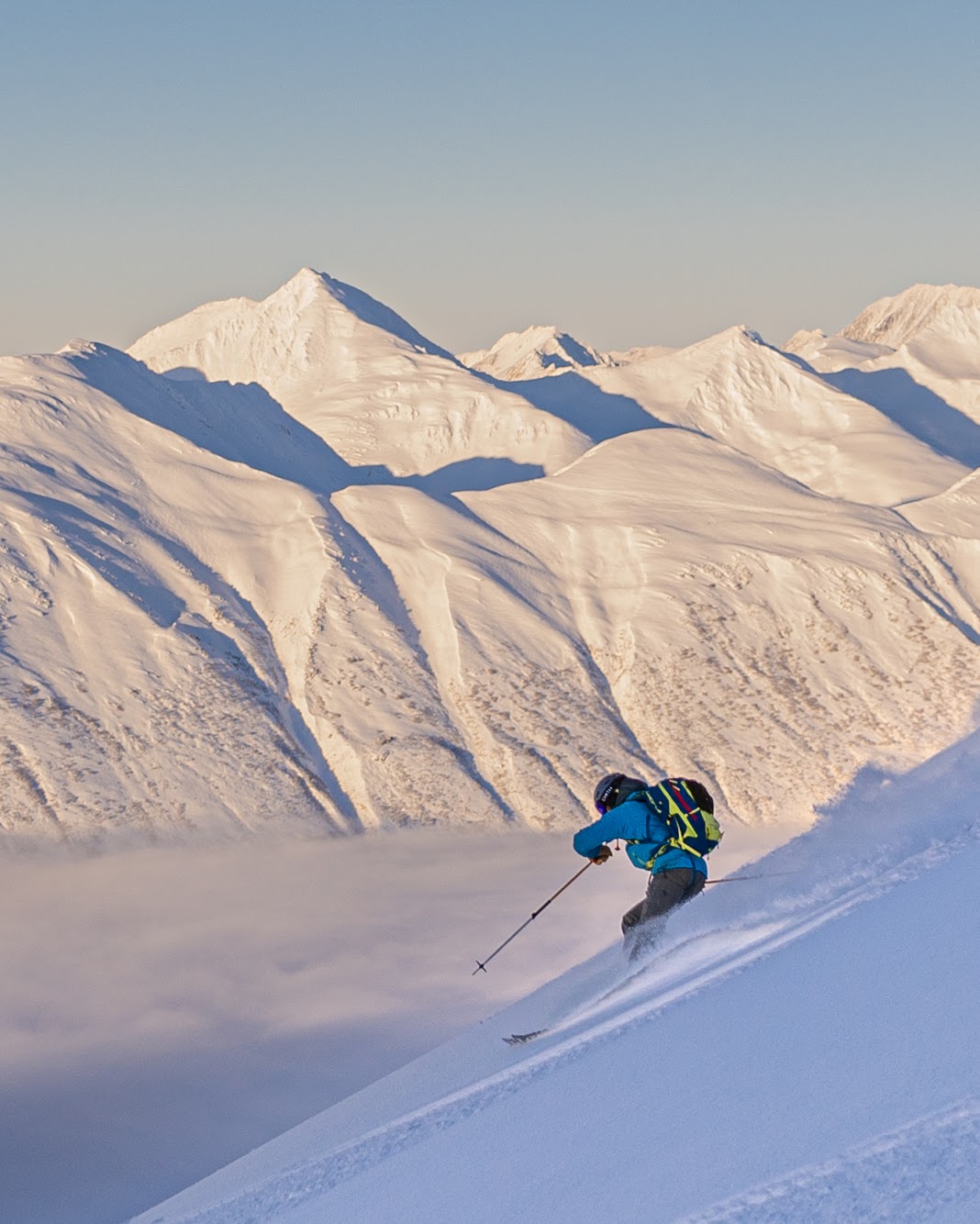
I’ve made immense progress in recovering from the emotional toll of repetitive trauma — but it’s not a clean break. Healing is a long process of commitment and evolution. While re-exploring my identity as a skier, I continue to be confronted by the challenge of locating the sweet spot of personal risk tolerance and being the skier I know that I can be. An involuntary fear response continues to pester me in variable conditions, and not only destroys the enjoyment of an outing for me, but deters me from expanding my horizons into terrain that I am confident is within my abilities. Following these moments, I toe the line with writing off alpine ridge lines entirely, but instead commit to returning to therapy.
It’s been a heavy and arduous journey to recovery, but I am empowered after making the personal commitment to be the spark that started the fire of change. This is my one life and I’ve got the matches.
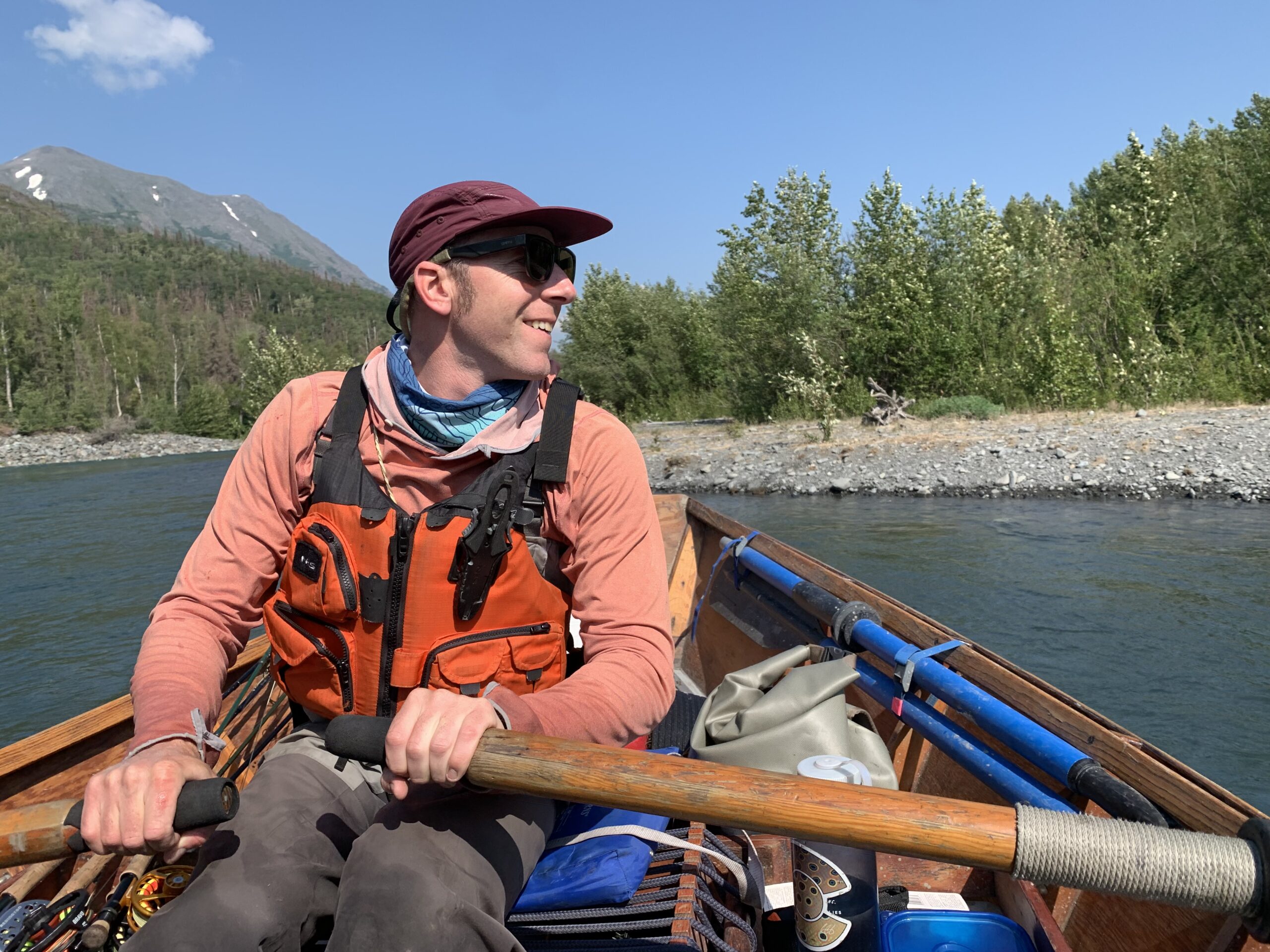
Friendly reminders from my personal experience for your consideration:
- Never compare your struggles to those of others. Your struggles are unique to you and they are valid.
- Just because you don’t know about someone’s trauma or struggle doesn’t mean it doesn’t exist.
- Check in with your homies. Even if they aren’t fully open with you, they will feel and appreciate the love.
- You never have to suffer in silence. Being open and vulnerable is where you will find true strength.
- Don’t blame yourself. Blame is a trap of negativity that can detract from the truth, keep you fixated on the past, and prevent you from moving forward.
- Maintain and nurture a positive relationship with your body and your mind. Both are connected and a negative relationship or imbalance with one can ripple through your life. More self love, less self abuse.
- The more we share our experiences, our fears, and our emotions with others, the more we learn how similar we are. This is something every community needs more of.
Postscript
Today, chasing wild fish and flowing through the Chugach Mountains are among Eric’s favorite pastimes. He still finds joy in trying to ski 100 days a year. And he recently started seeing a therapist again.


Thank you for sharing your story, Eric. It really touched me. Truly. Thank you. I wish you the very best. Be well.
There are about a dozen lines in this that hit incredibly close to home for me. Thank you for sharing.
What a story. Thanks so much for sharing it Eric.
It should be compulsory reading for PE coaches.
Enjoy your new found life.
Beautiful, powerful writing, Eric.
I’m so glad that you have found answers, and getting the help to make a difference in your life. You are a very special person to come forward and share this with others. We will always cherish the friendship we shared. Proud of you
Thank you so much for sharing your journey Eric. I am so sorry you had to carry all that inside you for such a long time. You are a wonderful storyteller and writer. It is great to see you now with your ability to embrace joy and celebrate each day.